Making your properties safe, healthy, and comfortable isn’t just about being a responsible landlord. It’s a legal requirement under the Homes (Fitness for Human Habitation) Act, in effect since 2019 in the UK. Failing to meet these standards can lead to legal claims, compensation payouts, or even forced repairs ordered by the court.
That’s why many landlords now turn to digital tools like Resco Inspections+ Property, which help them stay compliant, document every step, and resolve issues faster and before they escalate into costly problems.
In this guide, we’ll break down what the FFHH Act requires, how to avoid the most common pitfalls, and how Resco’s digital inspection platform makes it all easier, faster, and stress-free.
What is the FFHH and why does it matter?
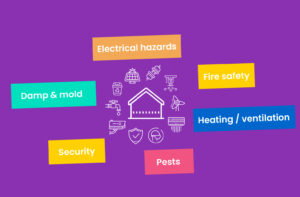
The Homes (Fitness for Human Habitation) Act (FFHH) requires landlords to keep all rented houses and flats safe, healthy, and secure throughout the tenancy. Failure to meet these standards allows tenants to take legal action, which can force landlords to make repairs or pay compensation.
This legislation, introduced on March 20, 2019 as part of the Landlord and Tenant Act 1985, was largely driven by safety concerns highlighted after the Grenfell Tower tragedy. It applies to most new and existing tenancies (with certain grace periods and exceptions).
Under an “Implied Covenant,” tenants can file a complaint with local authorities; if the claim is valid, the authorities can escalate it to court. This ensures that serious hazards—ranging from structural instability to lack of fire safety are promptly addressed.
What defines uninhabitable living conditions under the FFHH Act?
The specific safety and health criteria used to evaluate housing conditions under the FFHH Act are defined by the Housing Health and Safety Rating System (HHSRS). This framework outlines 29 potential hazards that inspectors and courts may consider when assessing whether a property is fit for habitation.
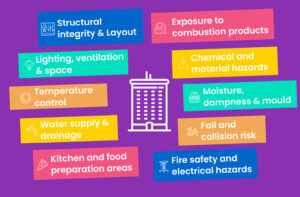
1. Food safety
Food safety problems include tenants’ difficulties while storing, preparing, or cooking food. The issues can be caused by a damaged sink that restricts proper cleaning or a humid environment that can cause fungal, mould, or mildew growth.
2. Water supply
It involves any restriction in the consistent water supply that may affect the cleaning, cooking, washing, drinking, or sanitation process. The issue may be caused by a faulty pipeline or any problem with the storage tanks.
3. Domestic hygiene, pests, and refuse (including all disposal of household and water waste)
The section addresses any unhygienic circumstances that can cause infection to the habitants. The problem may arise due to inadequate use of insecticides or pest control spray, potential entry of rodents or insect, damaged brickwork, or broken windows.
4. Crowding and space
The crowding and space issue involves the insufficient provision of area for personal space, which primarily directs toward structural and design flaws. A lack of space in crowded conditions or public gatherings also comes under this section.
5. Noise
Unnecessary noise from the environment is a threat to mental health. Every improper measure for sound insulation from neighbours or surroundings, which can cause inconvenience is subjected to this category.
6. Excess cold
These are any threats to physical or mental health when the temperature falls below a comfortable level. It can be caused by any seasonal change, calamity, poor insulation, or absence of an operative heating system.
7. Excess heat
There can be a threat to physical or mental health when the temperature goes above a comfortable level. The issue can arise due to poor ventilation, improper cooling system, too many south-facing windows, or insufficient measures to address hot weather.
8. Damp & mould growth
Issues like mould, mildew, fungal growth, or dust mites due to dampness or humidity. These biological intruders can cause infection and health complications in the inhabitants. Their growth can result from poor ventilation or inadequate conditions to control humidity.
9. Biocides
It involves threats to residents’ health by chemicals to treat fungus or mould. It can be caused by inhaling, swallowing, or skin contact with the chemicals.
10. Asbestos and manufactured mineral fibers
Issues arising from airborne Asbestos and Manufactured Mineral Fibers. The materials were used as the coating and insulation of buildings during the time period of 1945-1980. Any complication from exposure to these fibers falls under this category.
11. Lead
The lead sources in housing are paints, water pipes, or industries near the residential area. Lead traces can also affect tenants living near a busy road, with the traffic exhausting smoke of leaded petrol. Problems from lead arise by inhalation of its fumes as it is toxic to humans.
12. Fuel combustion products
Fuel combustion products can cause health issues by inhalation of carbon monoxide, sulphur dioxide, nitrogen dioxide, and smoke. All these products are toxic and life-threatening. The causes for their emission are partial combustion of fuel, gas, oil, and solid fuels.
13. Radon gas radiation from airborne or water
Radon gas is formed by Uranium’s radioactive decay in rocks and soil. Its trace amount is present airborne or in water. The unit for its measurement is Becquerels per cubic metre (Bqm-3) in air, and the average level in the UK is 20 Bqm-3. Any residence with 100+ Bqm-3 is concerning and hazardous.
14. Uncombusted fuel gas leaks
Any fuel gas emissions from a leaking pipe or junction fall under this section. The threat is hazardous in the form of a leakage in a kitchen appliance like a stove, gas heater, or geyser.
15. Volatile organic compounds
Volatile organic compounds (VOCs) are typically sublime materials that are gaseous at room temperature, mostly found in newly built homes. Tenants can experience high VOC exposure from paints, glues, plywood, chipboard, solvents, and urea formaldehyde foam insulation (UFFI), which is adverse for health.
16. Potential intruder’s entry
This category addresses the entry of an intruder due to low-security measures, threatening life or possessions. It can happen due to housing location (in a region with a high crime rate), improper security measures, poor conditions of doors/windows, and the absence of alarm systems.
17. Lighting
It includes mental or physical health threats due to insufficient natural or artificial lighting. Inhabitants can face complications like vision issues, mental stress due to strain in eyes, or potential intruder’s entry mentioned above.
18. Personal hygiene, sanitation, and drainage
Any issue due to:
- Infections
- Inappropriate sanitation and drainage
- Lack of proper cleaning measurements
- Threats to mental health due to the above-stated conditions
A lack of facilities that restrict excessive sharing and improper discharge of fluids can be the primary cause.
19. Falls associated with bath and shower
It encounters all the risks and threats to physical health from falling in the bathroom or shower. The fall can be on the same level or from higher ground. Mostly the inappropriate placement of the bathtub or shower in the bathroom can cause inconvenience or hindrance.
20. Danger of falling from stairs and steps
Falling risk of an individual to a surface with a change in the level of more than 300 mm between grounds. Any kind of fall from stairs and ramps inside or outside the house is considered under this category.
21. Falling on a flat surface
It involves the risk of falling on the floor, yard, path, walkways, or corridors. This threat is applied to the fall that occurs between grounds with a change of level below 300 mm.
22. The danger of falling from one story to another or ground, like out of windows
It is the risk to physical health or life by falling from a ground more than 300 mm above the landing surface. It contains falling from the window, balcony, or roof inside or outside the building. Falls from stairs, steps, ramps, or ladders don’t count under this section.
23. Structural collapse & unstable housing elements
The collapse probability of the entire building or a part of it is considered as a potential risk to life. It can be due to improper fixation, repair, or mild natural calamity.
24. Physical strain while working on amenities
These are the physical strain due to different operations regarding the house’s functionality. The strains can occur while working on heavy doors, poorly sliding windows, or moving any other residence amenities.
25. Fire and fire safety
It regards any threats of life by (accidental) fires or smoke. The uncontrolled fire caused by the ignition of the fuel, solid fuel, in the kitchen or by a short circuit in any electrical appliance is counted in this section.
26. Explosions
The risk of life due to an explosion or debris created by it. In other words, any injury or death by partial or entire building collapse due to the explosion is also addressed here.
27. Electrical hazards
The issues may occur due to electrical shock or burns by an electrical appliance. However, the burning due to flames created from an electrical failure is not considered under this category.
28. Hot surfaces & materials
These are the problems from hot surfaces and materials that can cause burns, scalds, or bruises. They can be caused by skin contact with flames or hot materials like solids, water or non-water-based liquids, or vapours.
29. Collision & entrapment
It involves threats of trapping a body part(s) in any part of the house, such as doors or windows. It also contains an injury by potential collision with any feature, like doors, windows, walls, low ceilings, or other surfaces.
How to use the Homes Act?
It’s important for landlords to understand what steps a tenant may take if serious issues arise. If any of the mentioned issues are present, tenants should immediately notify their landlord in writing (via text, email, or letter). Keeping a documented record ensures proof of notification, which can be crucial if the issue escalates.
Once notified, the landlord becomes legally responsible for rectifying the situation promptly. If the landlord does not address the issue adequately, tenants can escalate their complaint to local authorities or initiate legal action through the court system.
If tenants decide to proceed to court, they should thoroughly review the relevant guidelines before applying. The N1 Form is suitable for smaller claims, but larger claims may require additional details and evidence. If tenants are unsure about the strength of their evidence, they should first consult their local council’s environmental health department for advice and support.
Evidence required in court includes:
-
- A copy of all written requests for repairs sent to the landlord (letters or emails).
- Photographic evidence of the problem.
- A medical note detailing any mental or physical issues caused by the property’s condition.
- A list of any items tenants requested to be replaced or repaired.
- Proof of recent rental payments or a copy of the tenancy agreement.
- Reports from experts hired to analyze or confirm the issue, if applicable.
These documents must be submitted along with the N1 Form and three copies for the local county court. Once submitted, tenants will receive documentation and the hearing date, a copy of which must also be sent to the landlord.
For Landlords:
Proactive property management is crucial to preventing disputes and maintaining compliance with the FFHH Act. Regular inspections, timely documentation, and clear communication are essential.
Tip: Digital inspection tools such as Resco Inspections+ Property can streamline this process. These platforms offer standardized checklists and real-time reporting, simplifying maintenance tracking and effective property management.
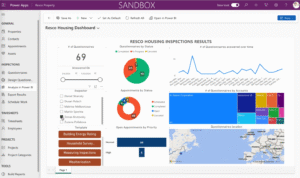
What can happen in court?
The court will analyze both situations and may order the landlord to fix the issue immediately. Moreover, the court can also order them to pay you the compensation for your difficulty, the value of which entirely depends on judges or jury analysis. It can even order the landlord to partially or completely pay your legal costs. If the landlord evicts you, contact your local council immediately.
If you win the case, the court will order your landlord to perform either one or both of the below situations:
- Fix the required issue and make the house fit for habitation
- Pay you some compensation, that depends on the court.
But if you lose the case, you need to pay some cost. In that case, talk to your solicitor or local council.
How can landlords make sure they comply with the act?
Not much has changed for landlords and property managers. They still need to invest in repairs required by the law.
But the most significant efficiency gains can be achieved in the way property inspections are reported and how they communicate with tenants.
For companies managing several properties, it is beneficial to standardize the whole process of inspecting, reporting, and contract signing. Thanks to standardization, landlords can prevent mistakes that may occur at any stage of a tenancy.
For example, if the landlord doesn’t use a checklist during a move-in & move-out inspection, it is easy to forget to check all the necessary inventory. Later, this can lead to an argument with the tenant about the original state of an item. That’s why it’s also beneficial to keep photo-documentation of a flat or house before a new tenant moves in.
As a lot of paperwork and documentation is required when renting out a property, it’s safer to standardize checklists and procedures at the very beginning to ensure compliance across the board.
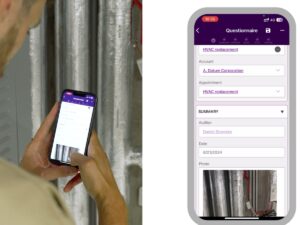
What are landlord requirements?
Along with the 29 circumstances mentioned earlier, the landlord also has to fulfil a few requirements given below:
- The house should have perfectly working smoke alarms
- The house should have perfectly working carbon monoxide detectors
- All the electrical instruments and appliances should be inspected and tested
Property management checklists
Landlords have long relied on paper checklists for property inspections and maintenance reporting—but today’s digital solutions are transforming the way properties are managed. Digital inspections make it easier to store documentation, capture photos, and instantly share reports with tenants, all while ensuring your checklists are always up to date with current regulations.
For a streamlined approach, consider downloading our free Property Inspection Checklist for routine move-in/move-out assessments, or the Property Management Checklist for ongoing safety and compliance tracking. With advanced features such as smart questions, conditional formatting, and CRM integrations, digital platforms like Resco Inspections+ Property help you manage everything from general property condition assessments to specialized safety audits.
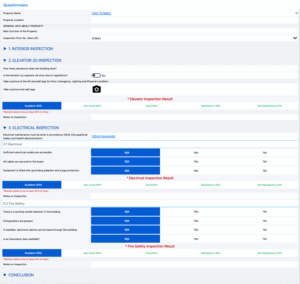
Additional tips for landlords
Thorough Inspections: Conduct comprehensive checks for any flaws, technical or electrical failures, or potential hazards before a tenant moves in.
Prompt Responses: Address any reported issues immediately and keep a detailed record of all maintenance work.
Regular Analysis: Periodically re-inspect the property and update documentation to ensure ongoing compliance.
Advance Communication: Always notify tenants in advance of any inspections or repairs.
Document Everything: Retain copies of maintenance invoices, repair records, and tenant communications to safeguard against future disputes.
Fitness for Human Habitation (FFHH) act summary
The FFHH Act has been in force since 2019 and its benefits to tenant rights and safety standards are already evident. Rather than being a burdensome regulation, it’s a catalyst for elevating industry standards. Digitalization not only streamlines compliance but also reduces disputes through improved reporting, standardized checklists, and effective online communication.
Take the first step towards digital transformation in property management by using our free predefined templates, especially our Property Management Checklist, which ensure every detail is captured accurately. Don’t leave compliance to chance and protect your properties and tenants with Resco Inspections+ Property. Start your free 30-day trial today and experience the future of property management.